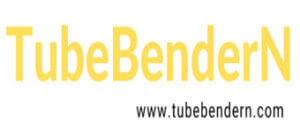Understanding Ovality in Tube Bending
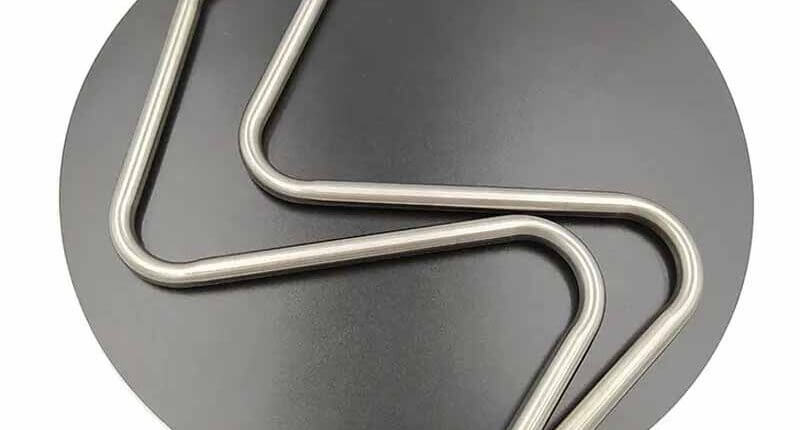
Tube bending is a key process in many industries, such as automotive, aerospace, and construction, this process can shape the metal tubes into various shapes and structures. Whether you want to make exhaust systems, hydraulic lines, or architectural frameworks, tubing bending can form complex curves and angles without compromising the material’s overall strength.
But, during the process of tube shaping, there is a challenge, known as ovality may occur. Ovality refers to the deformation of the tube’s cross-section, it does not look round as before bending, but rather oval. This result will lead to weakened structural integrity, misalignment in assemblies, and aesthetic or functional issues in the final product.
So, controlling the ovality during the bending process to ensure the strength of the bent tube, compatibility, and performance is very important. Especially for some industries where precision is the key, maintaining the roundness of tubes will help their final product perform the best.
What is Ovality in Tube Bending?
Ovality refers to the distortion of a tube’s cross-section from a perfect round to an oval shape during the bending process. Theoretically, the tube should keep the round shape during the entire bending process. However, due to mechanical force, especially when the customer requests a tight bending radius, the internal curve of the tube will become slightly flattened, and the outer curve of the tube may stretch, which will result in ovality.
Ovality is measured as the percentage deviation from the ideal round shape, which is important to ensure the tube maintains its structural integrity and functionality. How to calculate ovality? Here is the formula:
Ovality = [(Maximum Diameter – Minimum Diameter) / Nominal Diameter] X 100
- Maximum Diameter: The largest measurement across the tube’s cross-section.
- Minimum Diameter: The smallest measurement across the tube’s cross-section.
- Nominal Diameter: The original diameter of the tube before bending.
The result will be presented as a percentage, it indicates the degree of deviation of the pipe shape from its nominal circular shape.
Acceptable Limits of Ovality in Various Industries
For different industries, corresponding to different needs and functions, the acceptable ovality limits are as follows:
- Automotive Industries: In the application of exhaust systems, slight ovality is acceptable, the typical limits might range from 3-5%, as long as this ovality does not affect performance.
- Aerospace Industry: Due to the high requirements for safety standards and precision, and also to ensure structural and aerodynamic integrity, the ovality must be less than 2%.
- Construction Industry: For different structural purposes, the ovality limit may vary depending on the load-bearing requirements, but is usually between 3-6%.
- Hydraulic and Pneumatic Systems: In applications where fluid flow inside the pipe is critical, even slight ovality can affect efficiency. So, the ovality limits should be less than 3%.
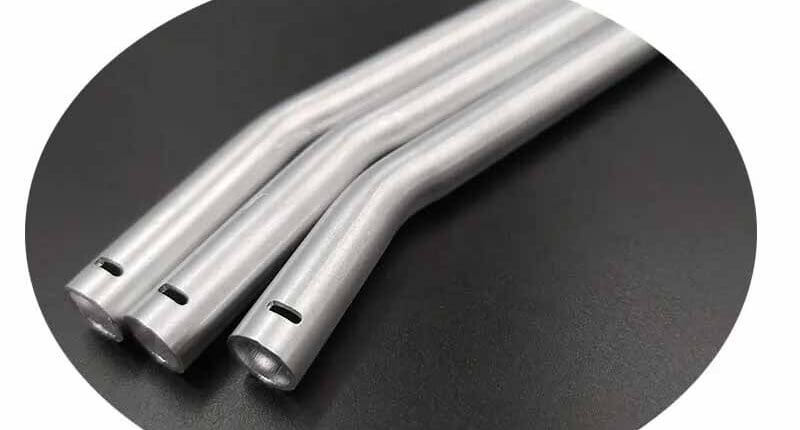
Causes of Ovality in Tube Bending
After tubing bending, if you found the ovality occurring at the end of the bent part, have you ever thought about what the causes are? Below are the main reasons:
Material Properties
The tube material properties have an important influence on whether ovality is likely to occur during the bending process. The key lies in:
- Composition: Bending soft material, such as aluminum tube will be easier to occur ovality than the stainless steel tube. The softer materials deform more easily under stress, so it is hard to maintain a perfectly circular cross-section during bending.
- Thickness: Compared with the thicker tube, the thin wall tube is more prone to ovality. This is because the thinner tube walls are less resistant to the compressive and tensile forces created during bending and therefore flatten more easily.
- Hardness: The harder material can resist deformation better, so it can reduce the ovality. However, the harder material has the risk of cracking during the bending process.
Bending Radius
The bending radius refers to the radius of the arc after the tube is bent, this factor is directly impacts ovality. The smaller the bend radius, the greater the ovality. Here are the reasons:
- Tighter Bends: When the bend radius is small, the inner part of the tube is compressed and the outer part of the tube is stretched. This difference in force distribution makes the cross section become less round.
- Deformation: The tighter the tube is bent, the greater the force acting on the tube will be, which may cause greater deformation.
Bending Method
The tube bending technique will also influence the ovality, different methods provide different controls on tube ovality.
- Rotary Draw Bending: This method provides excellent control during the entire bending process, allowing for tight bends with minimal ovality, suitable for highly precise bending requests.
- Mandrel Bending: This method uses a mandrel insert into the tube to maintain the round shape during bending. This method can effectively reduce the ovality, suitable for bending tight bends and think wall tubes.
- Compression Bending: Bending tubes by this method provide a faster and more cost effective result, but the tube is more ovality, suitable for some applications the slight deformation is acceptable.
Tooling and Equipment
Tooling and equipment are also the key factors to cause the ovality.
- Incorrect Die Size: Incorrect size of the die will lead to improper tube support, then result in deformation and ovality.
- Tool Wear: Worn-out tools can slip or apply uneven pressure to the tube, this will result in the tube losing its round shape.
- Alignment Issues: If the tooling is not properly aligned with the tube, the forces applied during bending will be uneven, increasing the likelihood of ovality.
Effects of Ovality on Performance and Quality
After knowing the reasons why causes the ovality. Here, let us take a look at if the ovality occurs, what impact will it have on you?
Structural Integrity
Excessive ovality will weaken the structural strength of the tube. The greater the tube deviates from the original round shape, the wall thickness of the tube will be very uneven, which will lead to the following problems.
- Reduced Load Capacity: Tubes are designed to bear the load based on the round cross-section, this design can ensure the stress is distributed evenly. But, if the cross-section is oval, then the stress will be concentrated in the thinner part, this will lower the overall strength of the tube.
- Increased Risk of Collapse: When subjected to internal or external forces, the tubes with high ovality are easier to collapse.
Fit and Function
The ovality will also affect the fit and function of tubes, especially for some industries that need to assemble with high precision.
- Poor Fit in Assemblies: Tubes with excessive ovality may not fit correctly into the components that they were designed originally. Improper alignment will lead to rework, which will increase your production cost and order delay.
- Reduced Fluid Flow Efficiency: Ovality reduces the efficiency of fluid transfer in tubes, especially in hydraulic or pneumatic systems where smooth flow is required. So, the greater the ovality, the more restriction there is to the flow, which leads to inefficiencies and increased energy consumption.
Aesthetic Considerations
In addition to functional issues, ovality also affects appearance, especially in some industries where appearance is strictly required.
- Visible Deformation: In some industries with strict appearance requirements, if the ovality of the round tube is very obvious, this will reduce the aesthetic quality of the finished product.
- Surface Quality: High ovality may cause wrinkling or other bending defects during the bending process, which may lead to potential structural defects.
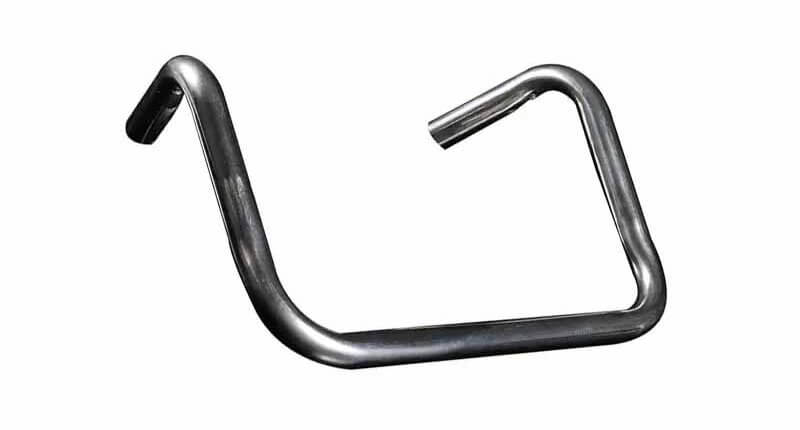
Methods to Minimize Ovality
How to minimize the ovality during tube bending is an important course for everyone who works in tube and pipe fabrication.
Material Selection
Choosing the proper tube materials for bending is important to minimize the ovality, here are the things you need to consider.
- Wall Thickness: Choosing tubes with thicker walls will help to minimize ovality since they provide more structural support during the bending process. they provide more structural support during the bending process.
- Material Strength: Tube material, such as stainless steel tubes, which have higher tensile strength is better able to maintain their shape under stress. Also, the material should have enough ductility to avoid cracking during the bend.
Bending Techniques
As we talked about above, the bending technique will affect the ovality, let’s solve the issue from bending techniques.
- Mandrel Bending: This technique uses a mandrel insert into the tube to support the inner diameter of the tube. The mandrel can ensure the tube maintains its roundness. So, mandrel bending is very suitable for tight bends and thin wall tube bending.
- Using a Larger Bending Radius: Increase the bending radius to minimize the possibility of ovality.
Tooling and Equipment
Proper tooling setup, lubrication, and equipment maintenance can also reduce the possibility of ovality.
- Tooling Setup: Ensure you have the proper bending tooling with the correct size to fit the tube, which needs to be bent.
- Lubrication: Proper lubrication will reduce the friction, and the tube can bend more smoothly, and prevent deformation.
- Equipment Maintenance: Regular maintain the bending machine can ensure all the components work very smoothly.
Mandrels and Wiper Dies
Although we have mentioned the bending tooling above, we have to highlight the mandrels and wipers dies here to show their importance.
- Internal Mandrels: If possible, using the mandrel to bend tubes and pipes can ensure the original structure of the round tube to the greatest extent.
- Wiper Dies: These are used to minimize wrinkling and deformation on the inside of the bend. When using the mandrel together with the wiper dies, can further reduce the ovality.
Are you looking for a tube bending machine that provides the best tube bending result? You are at the right place! TubeBenderN is the manufacturer that produces/customizes various machines for tube and pipe fabrication, Contact us to Get the Solution Today!
You may also interested in:
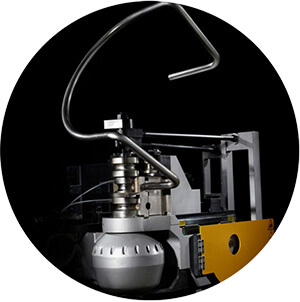
Denis Lau
Denis Lau has 20 years of work experience in the metal processing industry. His major in university was mechanical engineering, and after graduation, he started from the bottom of the workshop, gaining extensive hands-on professional experience and the ability to tackle challenges from various industries.
